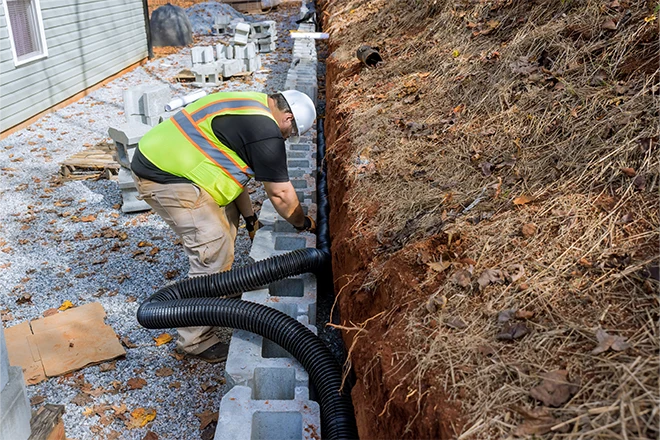There’s a pressing issue looming in Kansas City – erosion challenges. Are you equipped to handle the impacts on your property and the environment? In this informative blog post, we will research into the causes of erosion in Kansas City, its potential consequences, and most importantly, how you can be prepared to combat this environmental threat. Stay informed and safeguard your surroundings from erosion’s harmful effects.
Key Takeaways:
- Erosion Control is Crucial: It is important to implement erosion control measures to mitigate the impact of erosion in Kansas City.
- Proactive Planning is Essential: Being proactive in planning and implementing erosion control measures can help prevent costly damage to properties.
- Collaboration is Key: Engaging with local authorities, communities, and experts can help in creating effective strategies to address erosion challenges in Kansas City.
The Impact of Erosion
Economic Consequences
To understand the impact of erosion on Kansas City, imagine your property slowly losing its valuable topsoil due to erosion. Not only does this affect the aesthetics of your land, but it also has economic consequences. Erosion can decrease property values, increase maintenance costs, and even lead to expensive repairs.
Environmental Effects
The environmental effects of erosion in Kansas City are profound. Erosion can lead to sediment buildup in waterways, affecting water quality and aquatic life. It can also contribute to the loss of vegetation, leading to habitat destruction for wildlife. The long-term impacts of erosion on the environment can be devastating if left unaddressed.
It is crucial to understand that erosion not only affects the land directly but also has far-reaching consequences on the overall ecosystem. As sediment washes into rivers and streams, it can disrupt aquatic habitats and reduce water quality, affecting both plant and animal species that rely on these water sources.
Causes of Erosion in Kansas City
Natural Factors
It is necessary to understand the natural factors that contribute to erosion in Kansas City. These include heavy rainfall, steep slopes, and the region’s soil composition. When intense rainfall occurs on sloped terrain, it can easily wash away the topsoil, leading to erosion. Additionally, the soil in Kansas City is predominantly made up of clay, which is more prone to erosion compared to other types of soil.
- Heavy rainfall
- Steep slopes
- Clay soil composition
Knowing these natural factors can help you better prepare for erosion challenges in Kansas City and take necessary precautions to prevent or mitigate its effects.
Human Activities
Human activities also play a significant role in exacerbating erosion in Kansas City. Construction, deforestation, and improper land use practices can disturb the natural landscape, making it more susceptible to erosion. When vegetation is removed or soil is compacted due to construction activities, it diminishes the natural ability of the land to absorb water and withstand erosion.
Factors such as urbanization and agricultural practices can further accelerate erosion processes, leading to increased sediment runoff into water bodies and degradation of the local ecosystem.
Identifying High-Risk Areas
Many factors contribute to erosion in Kansas City, and identifying high-risk areas is crucial in developing effective erosion control strategies. By understanding the specific vulnerabilities of different topographical features, you can better prepare for and mitigate erosion risks in your community.
Floodplains and Waterways
An imperative high-risk area for erosion in Kansas City is floodplains and waterways. These areas are particularly susceptible to erosion due to the regular flow of water, which can quickly erode soil and destabilize banks. The erosion in floodplains can lead to loss of valuable farmland, property damage, and even increased sedimentation in waterways, impacting water quality and aquatic habitats.
Steep Slopes and Hillsides
Areas with steep slopes and hillsides are also high-risk zones for erosion in Kansas City. The rapid flow of water down these inclines can easily displace soil and cause landslides. Steep slopes are often seen in residential areas where construction and deforestation have altered the natural landscape, making them even more vulnerable to erosion.
For instance, heavy rainfall can saturate the soil on steep slopes, increasing the likelihood of erosion. Without adequate vegetation or erosion control measures in place, these areas are at significant risk of erosion-related damage.
Mitigation Strategies
Soil Conservation Techniques
Unlike urban areas, rural regions in Kansas City are at a higher risk of erosion due to the extensive agricultural practices that disturb the soil. One effective way to combat soil erosion is through the implementation of soil conservation techniques. These methods include contour plowing, terracing, cover cropping, and no-till farming. Contour plowing helps in preventing water runoff by plowing across the slope rather than up and down, while terracing creates level areas on steep terrain to slow down the flow of water.
Flood-Control Measures
One effective flood-control measure in Kansas City is the construction of retention ponds and wetlands. These natural or man-made water bodies help in storing excess water during heavy rainfall, reducing the risk of flooding in downstream areas. Additionally, planting vegetation along riverbanks and streams can help stabilize the soil and reduce erosion caused by flooding.
It is crucial to invest in green infrastructure such as rain gardens, bioswales, and permeable pavements to mitigate the impact of floods in urban areas. These measures help in absorbing and diverting excess water, reducing the strain on conventional stormwater systems and preventing erosion in the city.
City Initiatives and Policies
Current Efforts and Programs
Keep up with Kansas City’s efforts to combat erosion by staying informed about the current programs and initiatives in place. The city has implemented various erosion control measures, such as streambank stabilization projects, stormwater management systems, and public education campaigns to raise awareness about the importance of preventing erosion. By understanding and supporting these initiatives, you can contribute to the overall preservation of Kansas City’s natural environment.
Future Plans and Proposals
One of the city’s future plans to address erosion challenges includes implementing more green infrastructure projects like rain gardens, permeable pavement, and green roofs. These initiatives aim to reduce stormwater runoff and erosion while enhancing the city’s sustainability and resilience to climate change impacts. By advocating for and participating in these future plans, you can help shape a more environmentally-friendly and erosion-resistant Kansas City for future generations.
Another aspect of Kansas City’s future erosion control strategy involves collaborating with local stakeholders, community organizations, and government agencies to develop comprehensive erosion management policies and guidelines. By fostering partnerships and engaging in these planning efforts, you can be an active participant in shaping the city’s response to erosion challenges and ensuring a more sustainable future for Kansas City.
Community Involvement and Education
Raising Awareness
To address Kansas City’s erosion challenges, the community plays a crucial role in raising awareness about the issue. By participating in local meetings, sharing information on social media, and organizing events, you can educate others about the impact of erosion on our environment. Empowering individuals with knowledge about erosion helps create a more informed and engaged community that is better equipped to tackle the challenges ahead.
Encouraging Individual Action
Education is key to inspiring individual action to combat erosion in Kansas City. By providing workshops, seminars, and educational materials on erosion prevention techniques, we can empower community members to take proactive steps to protect our natural landscapes. Encouraging practices such as installing rain gardens, using erosion control blankets, and planting native vegetation can make a significant difference in preserving our soil and water resources.
Action: Get involved in local conservation efforts, attend educational workshops, and spread the word about erosion prevention techniques to inspire others to take action in protecting Kansas City’s environment.
Summing up
Presently, it is imperative that you take action to prepare for Kansas City’s erosion challenges. The information provided in the article highlights the severity of the issue and the potential consequences if precautions are not taken. By being informed and proactive, you can help protect your property and the environment from the damaging effects of erosion.
FAQ
Q: What are the main erosion challenges faced by Kansas City?
A: Kansas City faces erosion challenges due to its hilly terrain, frequent storms, and development impacting natural water flow.
Q: How can erosion impact communities in Kansas City?
A: Erosion can lead to sediment runoff, water contamination, infrastructure damage, and increased flood risks in communities across Kansas City.
Q: What steps can be taken to address erosion challenges in Kansas City?
A: Implementing erosion control measures, planting vegetation to stabilize soil, maintaining drainage systems, and promoting sustainable development practices can help mitigate erosion challenges in Kansas City.



